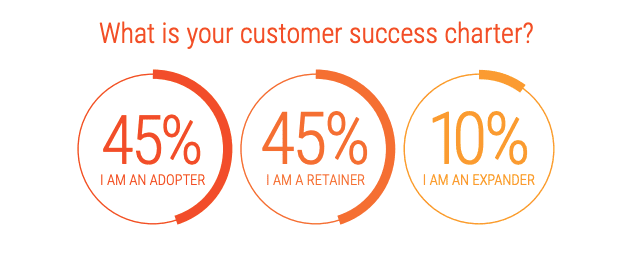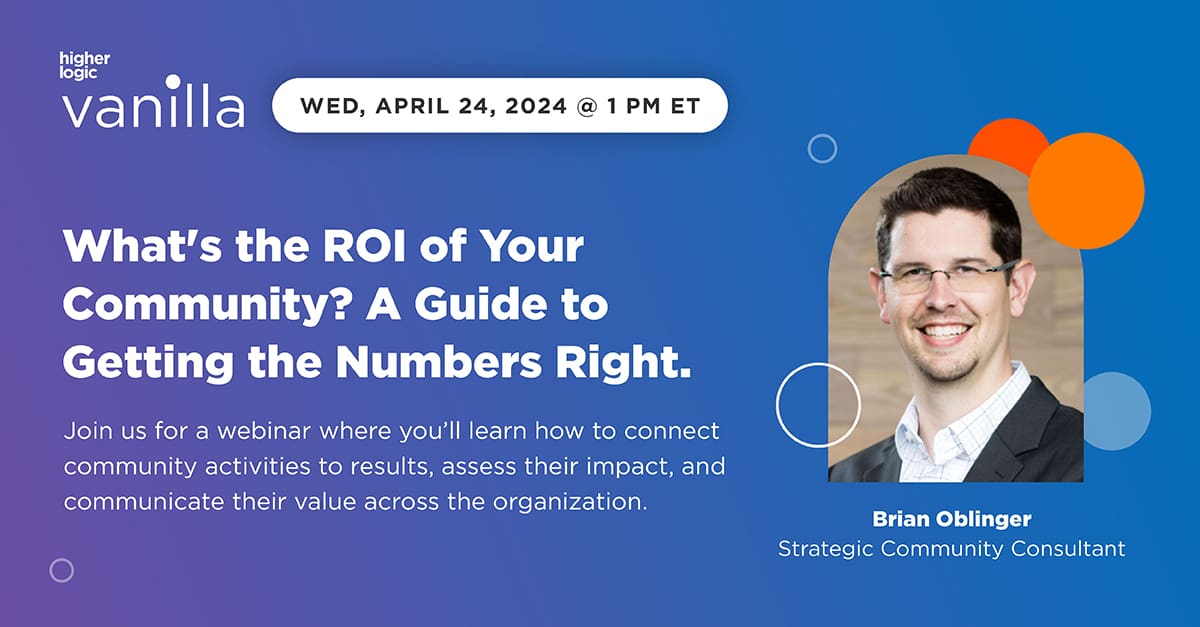
Boosting Adoption, Retention, and Expansion with a Single Platform
Though many technology organizations may have initially implemented customer communities with customer self-service in mind, as online communities mature, they offer strategic value outside of technical support. In particular, there are multiple use cases for leveraging communities to accelerate the success of your customers. In this blog we will look at how vibrant, engaged online communities can help your customer success team better meet your goals, as well as improve the overall customer experience for your enterprise customers.
Customer success teams have three primary charters:
- Adoption. From onboarding of customers, and monitoring of product adoption, to ensure customers are consuming products effectively, to speed time, to value for their purchase.
- Retention. In a subscription economy, there is enormous pressure on renewing SaaS subscriptions. customer success teams are typically tasked with owning the renewal process.
- Expansion. Customer success teams may also be responsible for growing accounts, identifying opportunities to sell additional user licenses, product features, or product modules, or to increase the wallet share of each account.
According to the TSIA Customer Success Benchmark Survey, here are the percent of customer success teams who say one or more of these is the charter of their organization:
 Customer communities can assist with each of these charters, as the following sections demonstrate.
Customer communities can assist with each of these charters, as the following sections demonstrate.
Adoption
Community conversations can assist in enabling and improving product adoption, simply by encouraging discussions about how customers are using the tools and features. Consider creating discussion threads to focus on:
- How was technology rolled out to employees? What sort of training was provided? How are you monitoring if employees are using the product to verify adoption? Having customers give their best practices for rapid adoption can be very helpful for other companies struggling with change management issues.
- How are companies using the products? What are the use cases? What business challenges does the technology help solve? Customers may have purchased a platform for a single use case or department, only to find other companies are leveraging the tools in other ways.
- What are tips and tricks to more easily navigate and use the technology? Any minor customizations that sped up adoption or made a process more intuitive? Sometimes just changing some field names to reflect the company’s proprietary naming conventions can make a big difference.
Retention
Customers purchase technology with specific business goals or outcomes in mind. Companies that meet or exceed these expected business outcomes are much more likely to renew their subscription contract. One of TSIA’s core member values is benchmarking yet, over the years I’ve worked with many tech firms who simply didn’t know which metrics to track, where to get the data, or how to even approach a return on investment (ROI) analysis. Having a section of the customer community dedicated to case studies of value received from technology serves several purposes:
- Demonstrate various approaches to calculating ROI, value, or outcomes. Some companies with advanced metrics programs may identify improvements in business measures that hadn’t been anticipated. I’ve also seen companies do correlation analysis between various metrics to show how improving a particular metric drove a rise in customer satisfaction, retention, margins, revenue, etc. These examples help educate other customers in new approaches to measuring value, which they can then demonstrate to their executives.
- Showcase successful customers. Providing industry visibility and recognition is a big win for your customers. Your customer success managers (CSM) can encourage customers to post mini-case studies of their implementations and business success in your community, and you can recognize the best case studies at user conferences or other events. Creating this environment of customer success can inspire other companies, as well as serve as fantastic sales tools for prospects. According to our Customer Success Benchmark, 43% of customer success teams are tasked with building customer case studies and reference programs. Incorporating these into your community helps meet the objectives of the success team, and gives more visibility to the stories.
- Value of participating in an engaged community. I’ve seen technology companies who had customers spending 30-40 hours a week in their community. These customers were that passionate about the technology, and wanted to share their expertise with the larger community. Though creating a highly engaged community takes work, it can become not only a great support and sales tool, but also a great retention tool. Customers who are receiving immense value from community sharing and collaboration are more loyal to your brand, and their commitment to being a part of that community will override the annoyance of a particular service or product issue.
Expansion
If customers are receiving value from their technology purchase, and have consistently strong experiences, they are inclined to purchase additional products and services from you to grow the business relationship. Though the reality is that most customers hate being sold to, they love hearing from other customers how their implementations have expanded. Community discussions can help your customers plan their expansion, and build the business case for expansion, in multiple ways:
- What are typical expansion patterns? In interviewing companies about how they leverage specific technology, I find that companies often buy a platform for a particular module or capability, within a single department or geography. Then when they are successful, they extend their use of the product in incremental phases over the next one to three years. Understanding common starting points for implementing, and hearing how other companies expand that implementation to include additional product capabilities, to new roles or departments across the enterprise, or to new geographic offices, is very helpful.
- How did companies sell expansion to executives or IT? Whether expansion means buying additional user licenses for new teams or departments, or additional product modules or for-fee features, how did other customers make the business case to their management or to IT? Let’s be honest, many enterprise groups, especially within services, are not always the best at self-marketing. Any recommendations on who to make an expansion case too, and what has proven successful to communicate, will build a template for other customers needing budget approval or other corporate buy-in.
- Don’t forget services revenue. When working with customers to encourage sharing their expansion stories, don’t forget that expand selling also includes services projects. These could include professional services engagements to create additional customizations or integrations, virtual instructor led or onsite training classes, additional for-fee customer success onboarding sessions, etc. Highlighting how customers benefited from these services raises visibility for the offers, and helps customers understand the benefits they would receive from these additional investments.
Beyond Adoption, Retention, Expansion: Impacts on Overall Customer Experience
In addition to helping customers with self-service support, and assisting customer success with their core charters of adoption, retention, and expansion, customer communities can also improve the end-to-end customer experience in multiple ways.
- Ideation. Allowing customers to suggest features and enhancements in the community, and “vote” on what to include in future releases, improves transparency in the product development process and gives customers an active voice in driving product roadmaps. I hear from companies shopping for technology that this is something they look for—they want to know that they will have input in product direction. I am also seeing more companies include in release announcements what percent of new features came from customer ideation—a key indicator that the development process is customer focused.
- Collaboration and knowledge sharing. Having a vibrant and engaged online community is not only a great sales tool for technology shoppers, but it improves the “stickiness” of customers who feel they are a part of a group with shared goals, experiences, and challenges. Offering threads on ancillary topics, such as employee experience, diversity, or technology trends, can make your community a real hub of collaboration, expand your audience, and add value to your company’s brand beyond your products. As mentioned in the retention section, when customers love the community and are spending time there, it becomes a big barrier to churn.
- Industry specific conversations. Enabling community discussions by industry, geography, or role will encourage deeper discussions around more complex issues specific to a segment of customers. This not only increases that “stickiness” and offers more value to customers, but it deepens their commitment to your brand. Offering a moderated discussion group on a particular topic may even be a revenue generator. According to my 2020 Knowledge Management Survey, 22% of TSIA members have fee-based access to self-service and community capabilities, and often this is an offer for a moderated discussion among particular roles (CIOs) or industry topics (HIPAA compliance in healthcare).
For more information on how customer communities can expand, primarily, from support communities to have more enterprise-wide strategic impacts, see my research report, “TSIA Enterprise Community Progression Model: Evolution from Tactical Support Forum to Strategic Industry Thought Leader Hub.”
Recommendations
Want to take your community to the next level? Want to leverage your community as an enterprise-wide strategic asset? Here are some hints to get started.
- Include community registration as a key part of customer onboarding. I’ve talked to many companies that have invested in excellent community infrastructure and dedicated resources to moderation, but have ongoing issues getting traction with customers. Be sure that registering the customers for the community, and giving them an overview of various discussion areas and how to participate, is a key part of customer onboarding. Part of the adoption tracking that success managers do should include how engaged their customers are in the community. For those who are slow to get involved, send them periodic updates on new discussion threads relevant to them, and consider using the community as a hub for critical updates to encourage use.
- CRM integration to community activity is critical. It is important to know which customers are highly engaged and active in your community. Tracking community activity in the CRM account and contact records makes this information visible to everyone. In a webinar we did with Vanilla last year, How Qualtrics XM Community Empowers Customers through Digital Self Service, Emily Gottschalk, Managing Editor, Digital Support Experience for Qualtrics described their approach. Qualtrics writes the level of each customer in the community reputation model into their contact record, which is highly visible every time an employee touches that customer. So if you are talking to an “Expert,” you can thank them for their participation. If it is someone at “Novice” level, that gives you an opportunity to remind them to visit the community for the latest updates and discussions.
- Leverage communities for customer announcements to help success teams scale. Keeping customers updated on new company and product announcements is part of a CSM’s job. But writing emails or recording videos takes time to create and send. If announcements to customers are all centralized within the community, customers can register to be notified when a new announcement is posted, eliminating the CSM from the process. Then the CSM, as time permits, can monitor which customers have clicked through to announcements, and only take action if critical news goes ignored.



